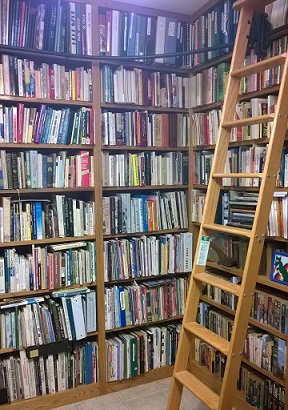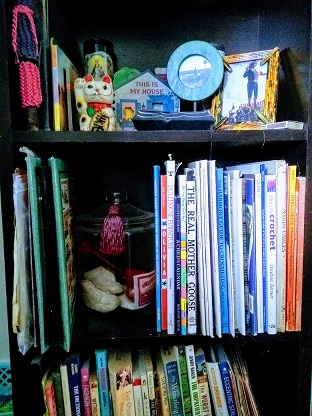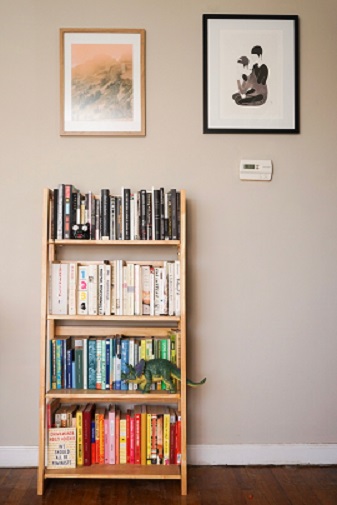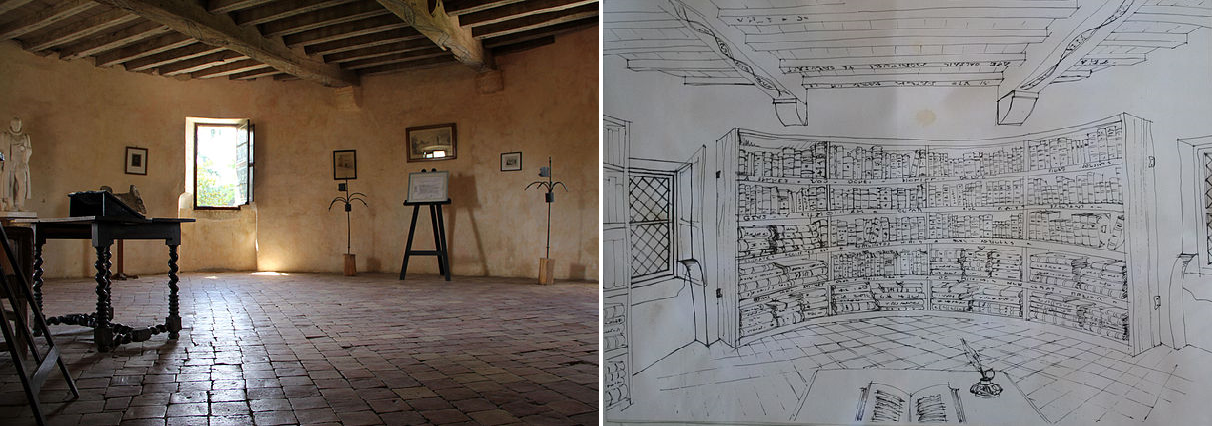Coming home after a long day of work at the public library, many of us find ourselves still surrounded by stacks on stacks of books that comprise our prized personal collections. (While you’d think we library workers needn’t own much given our livelihoods depend on an institution of sharing, few of us could boast of such self-restraint.) Mine had grown increasingly unwieldy through my college years, so naturally I caught the Dewey Decimal bug soon after starting my job here, feeling compelled to inventory and rearrange my own mismatch shelves (and milk crates). While sorting the nonfiction into subject areas, I wondered whether my coworkers brought the same organizational rigor to their home libraries as when on duty, so I decided to ask. The short answer is a resounding “yes,” but each has developed an idiosyncratic system for keeping it all straight, or at least off the floor.

Between their responses and those of public figures in books like “My Ideal Bookshelf,” Alberto Manguel’s “The Library at Night” and Jacques Bonnet’s “Phantoms on the Bookshelves,” I’ve seen some enviable displays and accrued techniques galore. Some are on Rory Gilmore‘s level: books on the shelves, books in the dresser drawers, books stowed under the bed. Others have adopted systems analogous to the Marie Kondō method* of painstakingly housing only the most gratifying. Some proudly have no scheme at all. Regardless, these libraries can reveal a lot about their owners; they not only represent our interests but also show our habits in negotiating space, how we assign value and how those values intersect with our conspicuous designs. For Kathryn Schulz writing in The New Yorker, a photograph of her father’s “Stack” exudes the parts of him “that normally defy a camera” like his “exuberant, expansive mind” and “the comic, necessary, generous-hearted compromises of my parents’ marriage.” Leah Price puts it concisely in the introduction to “Unpacking My Library: Writers and Their Books”: “To expose a bookshelf is to compose a self.”

Here were some stand-out responses and nifty trends:
- Owning re-reads and sentimental texts while preferring to borrow most else from DBRL. Based on my numbers, three quarters of DBRL staff will have the Harry Potter series on their home shelves.
- If you want it to stay relevant, keep it nearby, especially as your collection grows. That could look like having a shelf of your unread books in order of acquisition within arm’s reach of your reading nook. Or maybe a stack of go-tos at your work station to get your creative juices churning. Material you’re okay with sharing (and perhaps losing) can live on your more public shelves, like those in a living room or guest room.
- 2a. If you are generous enough to lend from your personal collection, consider creating an inventory to track that borrowing. This could be a simple paper log or a digital format like Goodreads or your DBRL account.
- If it ain’t broke, don’t fix it. By far, the most common organization strategies were straight from DBRL’s handbook: non-fiction by subject, fiction in alphabetical order by author and genre fictions (like Sci-Fi or graphic novels) on their own. Location matters, too. Let the purpose of the space help you decide what fits. For me, it would makes no sense to have cookbooks stored upstairs in perfect dewey decimal order (641’s, i.e. between fishing and dining) when where I really need them is down in the kitchen, even though this makes them vulnerable to flying tomato sauce.

- Keeping your materials willy-nilly could induce stress OR could be your default method, allowing you to rediscover treasures you forgot you had.
- Rules were meant to be broken. You don’t have to be a cataloger to understand the struggle of finding a place for books in “taxonomic grey areas.” Since the collection is accountable only to you, put it where your gut tells you, even if it means muddling strict categories. Or create a sub-section just for these grey areas! Alternatively, your method may ignore conventional rules, like these gorgeous rainbow shelves to the right belonging to a staff member.
- The winners: Montaigne had us all beat back in 16th century France, but author and comic-artist Alison Bechdel comes in close second. You can peruse her obsessive store in “Unpacking My Library.”



